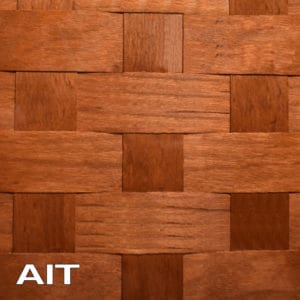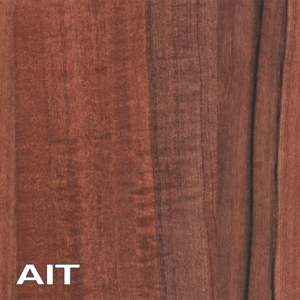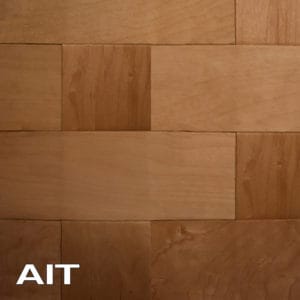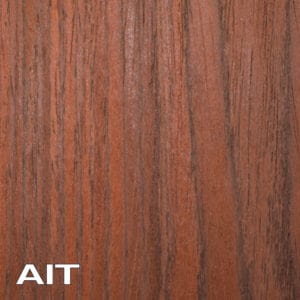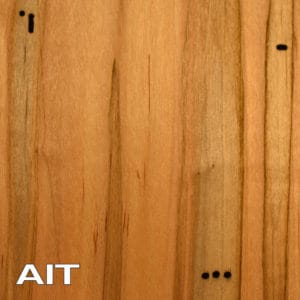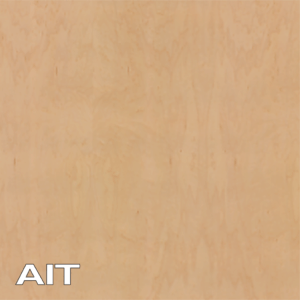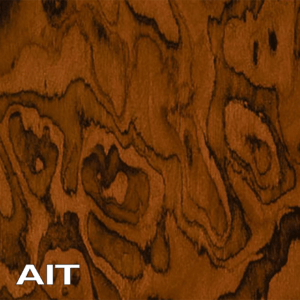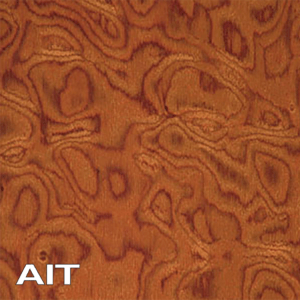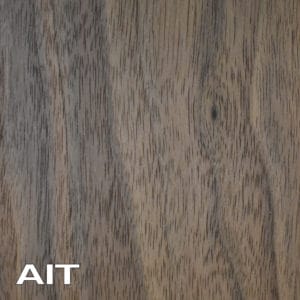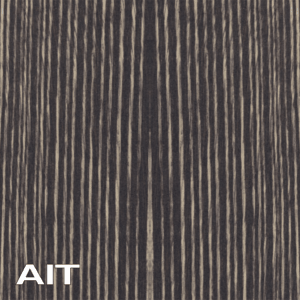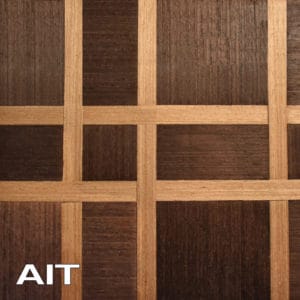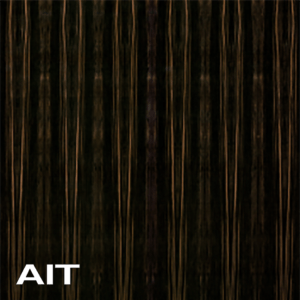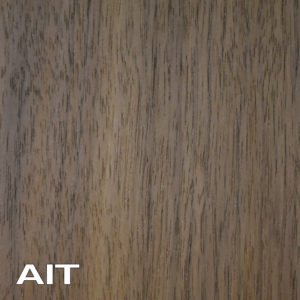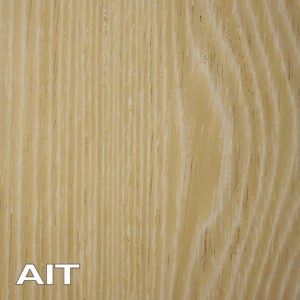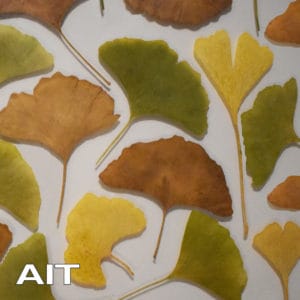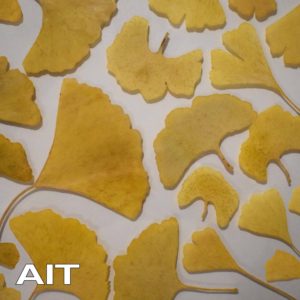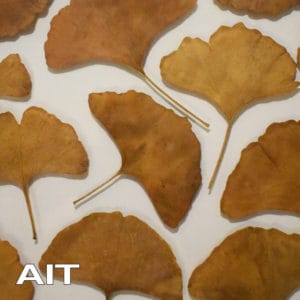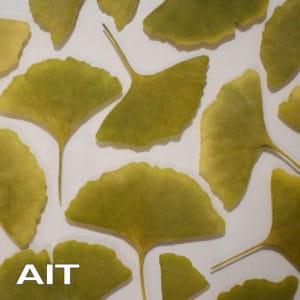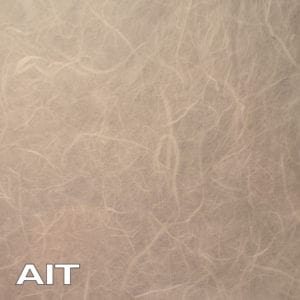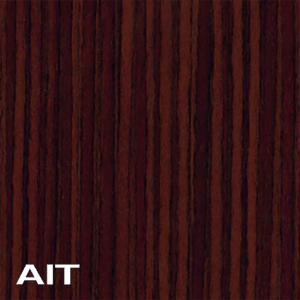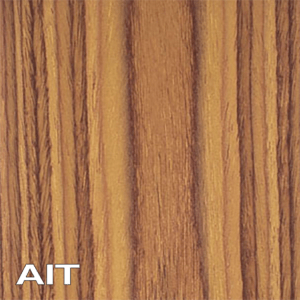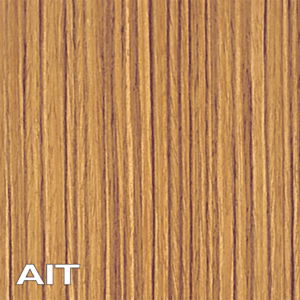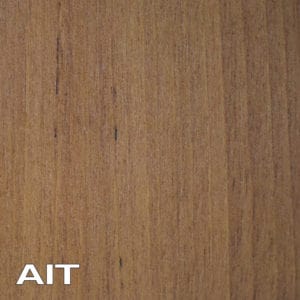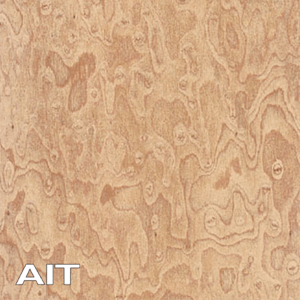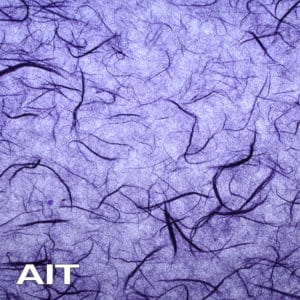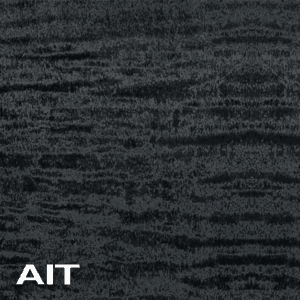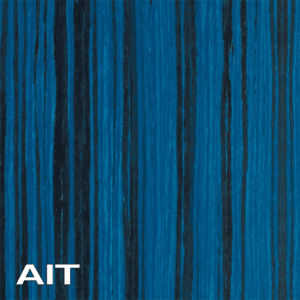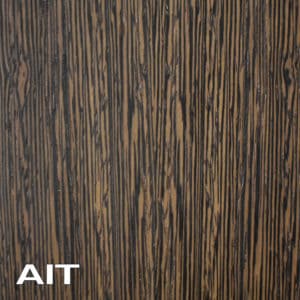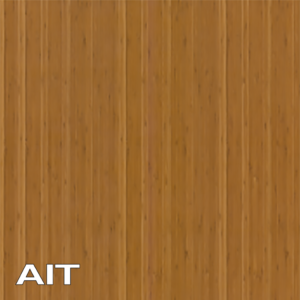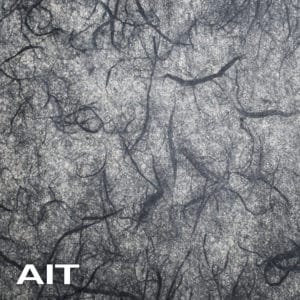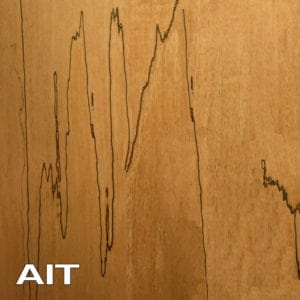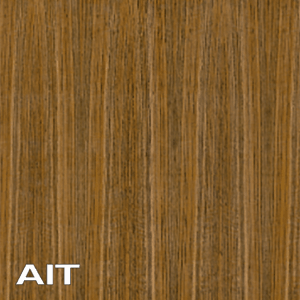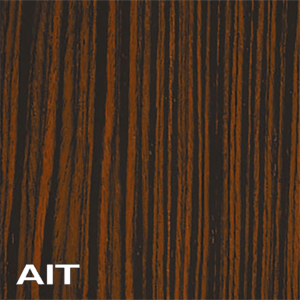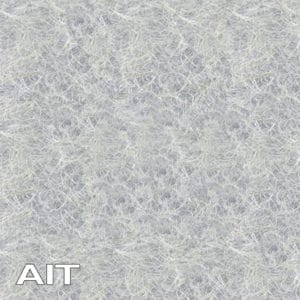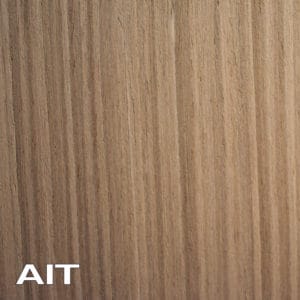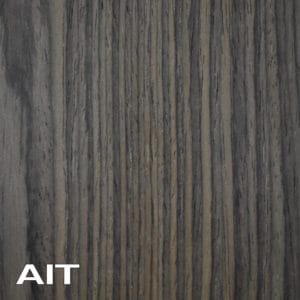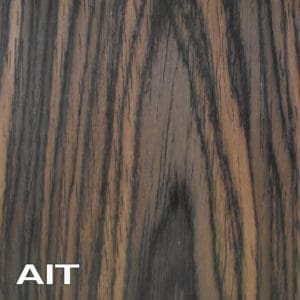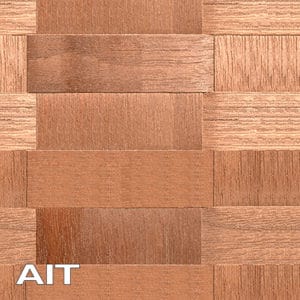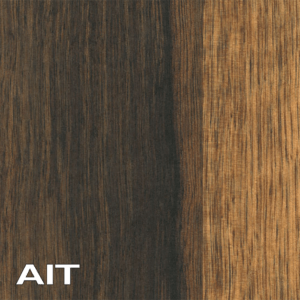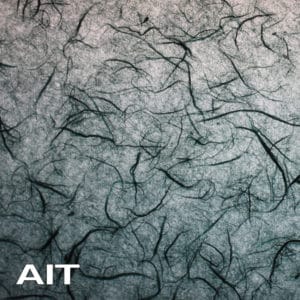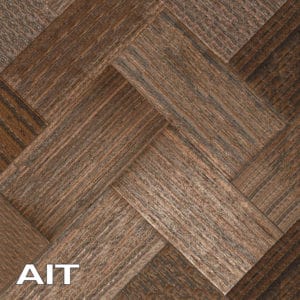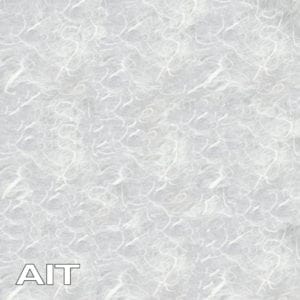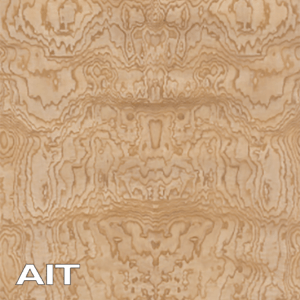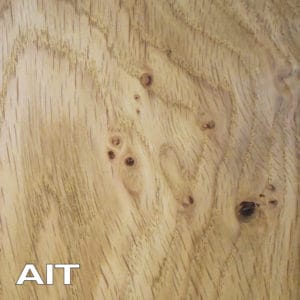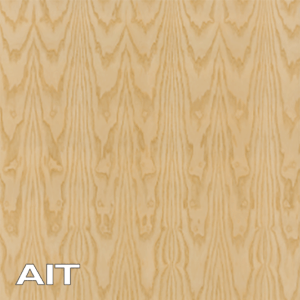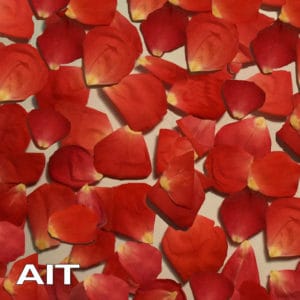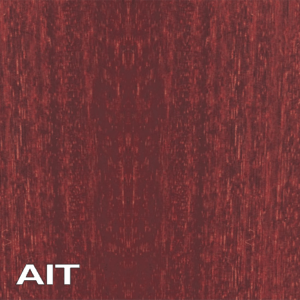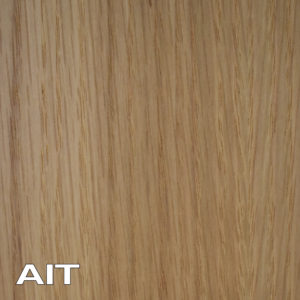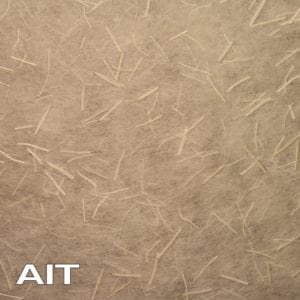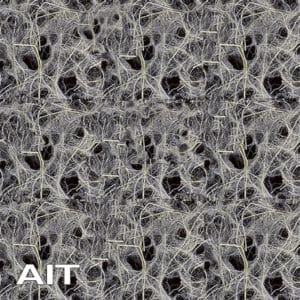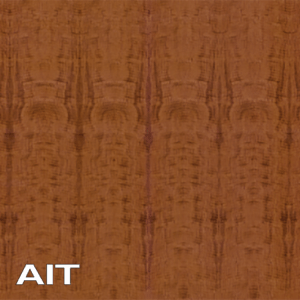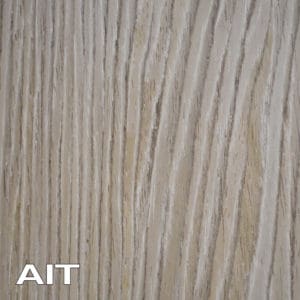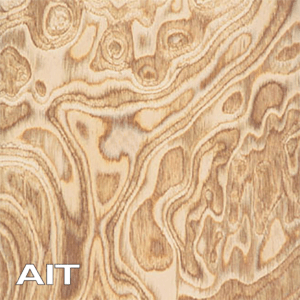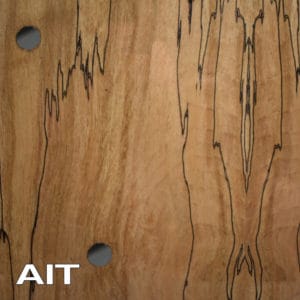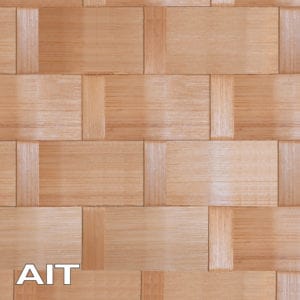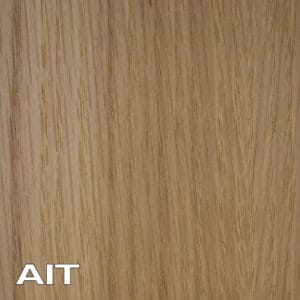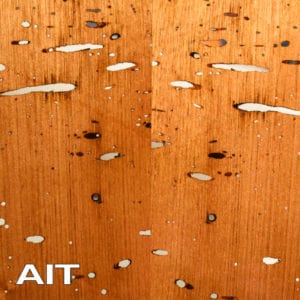With offerings direct from nature, that continues to grow and branch in new directions, Smarts Design remains rooted in the link between people, activities, and setting.
Showing all 60 results
ACADIA
ACADIA is the union of interlaced cherry wood veneer within glass, polycarbonate, or acrylic. With visual associations drawn from maritime and seafaring surroundings, and similar to Bar Harbor, Acadia is characterized by handwoven wooden strips to create both a braided pattern and upscale look on a period design. Sourced Northwood trees, Acadia stands above.
ALOHA
ALOHA is the union of Monkeypod Quarter Cut veneer, within glass, polycarbonate, or acrylic. From the Hawaiian word for "Hello", Aloha's Monkeypod or Raintree wood is native to the neotropics, from the Southern Americas to the Pacific Islands, and is characterized by its unique grain patterns, medium textures, and moderate natural luster. Considered a national treasure in many countries due an individual tree's historic importance, size, or longevity, Aloha remains available to greet any design.
ANNYEONG
ANNYEONG , from the Korean word for “Hello” (pronounced "ann -young"), is comprised of a layer of lightweight translucent wood fiber paper available within glass, polycarbonate, or acrylic. Sourced from trees within the peninsula, the unique decorative gloss paper is characterized by Manila Hemp fibers that have been being beaten, boiled and bleached prior to being combined with Kozo fibers.
AUSTRAL
AUSTRAL is the union of Tineo veneer, within glass, polycarbonate, or acrylic. Favored by designers for its unique colors and dramatic contrasting veins of black, Tineo is characterized by its straight grain, medium texture, and good natural luster. Harboring from southern hemisphere of the Americas, as the name Austral implies, the wood is additionally prized for its rarity as well as its unique and interesting array of colors.
BAR HARBOR
BAR HARBOR is the union of interlaced maple wood veneer within glass, polycarbonate, or acrylic. With visual associations drawn from small maritime communities and a past aesthetics, Bar Harbor features the weaving of wooden strips to create both a braided pattern and an upscale look on a timeless design. Sourced from trees in the Northwoods, Bar Harbor stands tall with designers.
BEDEL
BEDEL is the union of Rosewood veneer, within glass, polycarbonate, or acrylic. As one of the world's most commonly exported and dwindling of wood species, Smart Designs continues to take a lead in the use of rosewood that is plantation grown over forest harvested. High prized by the design and music communities for its reddish tones, straight grains, high strength, and acoustical values, the wood within Bedel also is also known for its distinctive rose-like scent. Have a project that needs the sound turned up, let Bedel play a lead role.
BERKSHIRES
BERKSHIRES is the union of figured maple wood veneer within glass, polycarbonate, or acrylic. The veneer is spliced from trees found in the northwoods and features tight knots, fine cracks, and impact insects. In fact, as ambrosia beetles bore into the wood they bring in a fungus that results in a highly sought after and characteristic discoloration. Bold and unique, Berkshires delivers.
BRETON
BRETON is the union of Birdseye Maple veneer, within glass, polycarbonate, or acrylic. Valued by designers for unique appearance, Birdseye Maple is technically not a distinct species of Maple, but rather a "figure" or "Bird's Eye" caused by unfavorable growing conditions in Sugar Maple trees. In fact, in failed attempt to start new buds to get more sunlight, new shoots within the wood of Breton are aborted and form tiny knots similar to the inlets that number the cape of similar name.
CANOPEA
CANOPEA is the union of Walnut Burl veneer, within glass, polycarbonate, or acrylic. Popular among both Architects and Interior Designers for its cooperative nature, Walnut with its rich brown coloration puts itself in a class of hardwoods with few equals. Named after the upper zone or crown of mature trees, Canopea features a wood known for its dimensional stability, shock resistance, and good strength albeit minor surface voids. Looking for wood that doesn't trail behind, Canopy can cover any design.
CATERINA
CATERINA is the union of Sapele Pommele veneer, within glass, polycarbonate, or acrylic. Sapele is one of the most commonly exported of all wood species from Brazil and is highly favored by designers as both a substitute for genuine Mahogany and for its unique pommele, or rain drop, finish. With numerous twists and turns, the wood within Caterina is also reminiscent of the hundreds of innumerable curves and switchbacks along iconic Route SC-390 in the state of similar name. Seeking a design alternative, let Caterina show you the path.
CHATKAL
CHATKAL is the union of Walnut Flat Cut veneer, within glass, polycarbonate, or acrylic. With a nod to one of the regions of Central Asia that houses the largest walnut forest in the world, its hard to overstate the popularity of Chatkal with the country's leading Architects and Interior Designers. In fact, walnut's cooperative working characteristics, coupled with its rich brown coloration, dimensional stability, and strength, make it a hard nut not to be considered.
CHOBE
CHOBE is the union of Dyed Obeche veneer, or "Liquorice", within glass, polycarbonate, or acrylic. Becoming every popular with designers, Obeche is an African hardwood which is soft and lightweight with a decent strength-to-weight ratio. Known for its interlocked grain, medium to coarse texture, and good natural luster, the confection linked wood within Chobe is becoming increasing familiar outside of Africa, as is the national park of the same name.
DOWNEAST
DOWNEAST is the union of zebra wood veneer within glass, polycarbonate, or acrylic. Reminiscent of the flooring patterns and memories arising from coastal New England and cottage life during the summer, Downeast features the use of contrasting wooden strips braided to form a classic pattern of period lineage. Simple yet bold, Downeast sails its own design course.
EBENOS
EBENOS is the union of Macassar Ebony veneer, within glass, polycarbonate, or acrylic. Prized by designers for its luxurious and multi-colored wood grain, Ebony and its variations are extremely dense black hardwoods. Finely textured, with a good natural luster and Pale Gold Sapwood, it is in fact funny that the best ebony will appear more like a black plastic than an ornament wood. Looking for wood for an ivory tower that won't sink the budget, consider Ebenos.
ETOSHA
ETOSHA is the union of a Black Limba wood veneer, within glass, polycarbonate, or acrylic. Historically known as Afara or Korina, Black Limba has a straight grain that is slightly interlocking, of moderate luster and a uniformly coarse texture. A play on the name of a famous national park that means "Great White Area", Etosha bring Black Limba out of the "dried pan" and into design community's view.
FERGANA
FERGANA is the union of Walnut Quarter Cut veneer, within glass, polycarbonate, or acrylic. With a nod to one of the two regions in Central Asia that houses the largest walnut forest in the world, local stories abound about global use of Fergana in architecture, furniture design, and automobile interiors. Elegant yet understated, enthusiasm for walnut from the silk road is hard to quantify with a nut shell.
FOLOI
FOLOI is the union of Frosted Oak Recon Plank veneer, within glass, polycarbonate, or acrylic. Named after the famous oak forest of the Aeagan region that provided a path for Hercules, the wood within Foloi is typically demarcated ranging from light to medium brown with a slight olive cast. Strong, beautiful, and economical, it’s not a surprise that Foloi stands mighty with Architects, Interior Designers and Graphic Specialists.
GINKGO IRO
GINKGO KIIRO, from the Japanese word for “yellow”, is the union of flat dried fan shaped yellow ginkgo leaves, within glass, polycarbonate, or acrylic. The leaves are harvested from trees on Japan’s main island of Honshu and their distinctive groove placed to achieve harmony and balance throughout. Elegant, simple, and easily recognized, follow the yellow brick road to Ginkgo Kiiro.
GINKGO KIIRO
GINKGO KIIRO, from the Japanese word for “yellow”, is the union of flat dried fan shaped yellow ginkgo leaves, within glass, polycarbonate, or acrylic. The leaves are harvested from trees on Japan’s main island of Honshu and their distinctive groove placed to achieve harmony and balance throughout. Elegant, simple, and easily recognized, follow the yellow brick road to Ginkgo Kiiro.
GINKGO KINIRO
GINKGO KINIRO, from the Japanese word for “gold”, is the union of flat dried fan shaped gold ginkgo leaves, within glass, polycarbonate, or acrylic. The leaves are harvested from trees on Japan’s main island of Honshu and their distinctive groove placed to achieve harmony and balance throughout. Elegant, simple, and easily recognized, Ginkgo Kiniro takes the gold in design.
GINKGO MIDORI
GINKGO MIDORI, from the Japanese word for “green”, is the union of flat dried fan shaped green ginkgo leaves, within glass, polycarbonate, or acrylic. The leaves are harvested from trees on Japan’s main island of Honshu and their distinctive groove placed to achieve harmony and balance throughout. Elegant, simple, and easily recognized, Ginkgo Midori leads in green design.
HALO
HALO, from the Indonesian word for “Hello”, is comprised of a layer of lightweight thin translucent wood fiber paper available within glass, polycarbonate, or acrylic. Sourced from trees within the Malay Peninsula, the paper is characterized by approximately 2” long loose Kozo paper fibers with both lightly textured and smooth faces.
HARREE
HARREE is the union of Ebony veneer, within glass, polycarbonate, or acrylic. Highly valued for its fine texture, polished finish, and depth of color, the dense ornamental wood within Harree remains among the most highly sought after within the design community. Deriving its named from ebony's historic and favored status in the creation of wands, let Harree change an ordinary project into something magical.
HUEGA
HUEGA is the union of Teak veneer, within glass, polycarbonate, or acrylic. Comprised of a wood that is a world favorite, with straight to wavy grains, uneven texture, and moderate to low natural luster, Huega projects a familiar aesthetic that is comfortable within a host of decors. In fact, Huega derives it phonetic label from the Danish philosophy of "hygge" in which balance, well-being, and contentment is sought.
IBONIA
IBONIA is the union of quartered Zebrawood veneer, within glass, polycarbonate, or acrylic. Sharing similarities in numbers of elements, bold attributes, and changes in direction, the wood within Ibonia, like the epic Madagascan poem of similar name, is a timeless reminder of how the oral story of man and nature interwine. Simple yet bold, Ibonia speaks to the design community.
JAMBO
JAMBO is the union of Moabi Quarter Cut veneer, within glass, polycarbonate, or acrylic. From the Swahili word for "Hello", Moabi or Pearwood is harvested from one of the largest trees in equatorial Africa whose immense size ensures large volumes of veneer well suited for architectural and interior design use. Regarded for its shimmering luster that refracts light, the wood within Jambo ranges from pinkish brown to rich red in color with a straight grain and fine even texture.
KACHINA
KACHINA is the union of a Birdseye Poplar composite veneer, within glass, polycarbonate, or acrylic. Sharing the visual appearance of a young bobcat, the treated finish of this encapsulated wood is characterized by its oil stained pattern, medium texture, and rich luster. Named after the animal's Hopi spirit, Kachina is never on the short end of getting the design community's attention.
KAMUSTA
KAMUSTA, from the Filipino word for “Hello” (pronounced "ku-moo-sta"), is comprised of a layer of lightweight translucent wood fiber paper available within glass, polycarbonate, or acrylic. Commonly refer to as Thai Unryu or Mulberry paper, it is characterized by short strands of 1/4” long straight purple colored fibers that are added to create contrast and texture.
KARAKUL
KARAKUL is the union of Black Oak wood veneer, within glass, polycarbonate, or acrylic. Resembling the woods that have been buried in peat bogs and preserved from decay, the Black Oak within Karakul also gets it characteristic dark color from the tannins dissolved in the acidic and anaerobic waters. With a pattern similar to the fleece of sheep of similar name, Karakul brings uniqueness and warmth to any design.
KENTE
KENTE is the union of Dyed Zebrawood veneer, within glass, polycarbonate, or acrylic. Sometimes called Zebrano, the wood remains popular with Architects and Interior Designers for its bold and unique striping that can be combined with various color dyes. In fact, the introduction of navy blue in Kente relates to the story of the Africa cloth of the same name, in which an Ashanti King requested that his new fabric include additional colors, beyond black and white, from the surrounding trees.
KGALAGADI
KGALAGADI is the union of Wenge Quarter Cut veneer, within glass, polycarbonate, or acrylic. Infamous for its intricate and interwoven black streaks set upon a reddish brown background, Kgalagadi (pronounced "khal-a-ga-dee") remain a favorite among Architects and Interior Designers for its durability, strength, and toughness. With a name shared with one of one of the continent's largest national parks, Kgalagadi stands out as one of the premier dark woods and is considered a viable substitute for specifics ebonies. Bold and distinctive, Kgalagadi continues to feed the designer's eye.
KHAO
KHAO (pronounced "cow") is the union of Narrow Bamboo veneer, within glass, polycarbonate, or acrylic. While preferred by designers for its unique, down-to-earth, Asian-flair aesthetics, the real story on Bamboo lies in its strength and mechanical properties. In fact, the wood within Khao, of similar name to one of the world's oldest forest, remains a top building material throughout the South Hemisphere even with its narrow period of harvest. Simple and uncomplicated, no hospitality or residential project is truly complete until the Khao comes home.
KIA ORA
KIA ORA, from the Maori word for “Hello” (pronounced "key-ora"), is comprised of a layer of lightweight translucent wood fiber paper available within glass, polycarbonate, or acrylic. Commonly refer to as Thai Unryu or Mulberry paper, it is characterized by short strands of 1/4” long straight black colored fibers that are added to create contrast and texture.
KILLINGTON
KILLINGTON is the union of spalted maple wood veneer within glass, polycarbonate, or acrylic. The veneer is from trees found deep in the northern woods and features a balanced splat lining, tight knots, fine cracks, and impact from insects. While absent of the taps from sugar harvesting as found in Stowe, Killington also imparts a natural beauty and unmatched link to the great outdoors.
KITAAR
KITAAR is the union of an Ovangkol wood veneer, within glass, polycarbonate, or acrylic. Winner of the wood with the most aliases, Ovangkol is a straight grain, moderately durable, and coarse textured African wood well known by designers seeking an alternative to the tonal properties of Rosewood. A favorite among those in the manufacturing of guitars and woodworkers, Kitaar likewise draws its very name from the regional street instrument of similar profile.
KONAN
KONAN is the union of Macassar Ebony veneer, within glass, polycarbonate, or acrylic. As a homage to the Indonesian long house of similar name, with upswept and sandback ends, Konan is comprised of a local wood with straight to interlocking grains, medium texture, good luster, and dramatic stripes. Sourced primary from Sulawesi, Konan proves that no design is an island when it comes to Architects or Interior Designers.
KONNICHIWA
KONNICHIWA, from the Japanese word for “Hello” (pronounced "kon-nee-chee-wah"), is comprised of a layer of lightweight translucent wood fiber paper available within glass, polycarbonate, or acrylic. Sourced from trees on Honshu, the unique decorative gloss paper is characterized by long Manila Hemp fibers combined with Kozo fibers, after being beaten, boiled and bleached.
KOOKABURRA
KOOKABURRA is the union of Australian Walnut veneer, within glass, polycarbonate, or acrylic. Like the Oceania bird of similar name, the wood within Kookaburra is increasing challenging to acquire and is highly prized for use in discerning interiors and architectural projects. Characterized by dark irregular strips when quarter cut, the heartwood is in fact not part of the walnut family but rather resembles it. Looking for a design that will make your project sing, then Kookaburra might be a good choice.
KRUGER
KRUGER is the union of Recon Charred Plank veneer, within glass, polycarbonate, or acrylic. Best known for it’s bold, unique, and irregular stripping, Kruger continues to remain as equally as popular with Architects and Interior Designers as other linear grained veneers . Wavy in appearance and smooth in texture, Kruger derives it name from the national park where related patterns in nature dot the landscape.
KUMAON
KUMAON is the union of East Indian Rosewood Recon Flat Cut veneer, within glass, polycarbonate, or acrylic. Considered as one of the most beautiful of all Rosewoods, Kumaon (pronounced "Ku-man") plays an integral part in the construction of designer chairs and custom musical instruments due to it unique red to purple hues and dark distinctive streaks. Considered a relative bargain in recon format due to its dwindling natural supply, Kumaon name is a nod to the region of its location and famed sub-continent national park. Looking to gain a bit curry with your client, Kumaon might be the right spice.
MARITIMES
MARITIMES is the union of interlaced black walnut wood veneer within glass, polycarbonate, or acrylic. Bring back memories of the playful intermingling of woods found in a cacophony of quaint structures on the eastern shore, Maritimes is comprised long wooden strips interlaced to create both a stacked look with horizontal emphasis. Simple and bold, Maritime weaves itself into the best of new designs.
MASAI
MASAI is the union of a Black Limba wood veneer, within glass, polycarbonate, or acrylic. Also known as Afara or Korina, Black Limba used in Masai has a straight grain that is slightly interlocking, of moderate luster and a uniformly coarse texture. From the name of a famous national park and people living a joining, Masai works in similar fashion to bring another variation of Black Limba to the attention of Architects and Interior Designers.
NAMASTE
NAMASTE, from the Hindi word for “Hello” (pronounced "na-ma-stay"), is comprised of a layer of lightweight translucent wood fiber paper available within glass, polycarbonate, or acrylic. Commonly refer to as Thai Unryu or Mulberry paper, it is characterized by short strands of 1/4” long straight green colored fibers that are added to create contrast and texture.
NEWPORT
Newport is the union of interlaced veneer, from wenge lumber, within glass, polycarbonate, or acrylic. Resembling the rope patterns employed to support the masts and set the sails of the harbor's tall ships, Newport illustrates the simple beauty that can be found in design of functional elements. Unmistakable and mesmerizing, Newport is always on the starboard side of design.
NIHAO
NIHAO, from the Chinese word for “Hello” (pronounced "knee-how"), is comprised of a layer of lightweight translucent wood fiber paper available within glass, polycarbonate, or acrylic. Commonly referred to as “Unryu-shi” or “Cloud Dragon Paper”, it is characterized by hundreds of long Kozo fibers that float across its surface.
NIKKO
NIKKO is the union of Tamo Ash veneer, within glass, polycarbonate, or acrylic. High prized by designers for its turbulent marking and striking color contrasts, the wood grains within Nikko, like the paths within the Japanese forest of similar name, may be swirly, curly, or wavy. Completely unique, with its closet in appearance to Quilted Maple, Tamo Ash is sometimes called "Peanut" because of the figure patterns created by vines which wrap themselves around the tree’s trunk, restricting the flow of nutrients, and causing growth in an uneven stop-and-go manner.
OZARKA
OZARKA is the union of Knotty Oak veneer, within glass, polycarbonate, or acrylic. Favored for its natural, figured, and rustic appearance, Knotty Oak popularity ensures large volumes of veneer well suited for architectural and interior design use. With an alternating tight to porous grain, and a medium to coarse texture, Ozarka takes it name from a major American region in which the wood is native. In fact, North America has the largest number of species of Oak making Ozarks a ready sources as a finish material. Cannot see the forest for the trees, then let Ozarka help your design to branch out.
PIEDMONT
PIEDMONT is the union of White Ash veneer, within glass, polycarbonate, or acrylic. Favored by Major League Baseball for its shock resistance and straight grains, White Ash has gained popularity within the design community due to its distinct pattern as well as it pliant, strong and light characteristics. Native to central and eastern North America, Piedmont gets it came from the heart of the harvesting region. Need a hit to bring a project home? Consider Piedmont to cover all of your bases.
RED ROSES
RED ROSES is the union of preserved freeze-dried red rose petals within glass, polycarbonate, or acrylic. The petals are harvested from family farms dedicated to celebration and special events, and applied in random, yet balanced, arrangement. Elegant, simple, and easily recognized, let Red Roses and its variations be part of your design vocabulary and processional.
ROUGE
ROUGE is the union of Figured Movingui wood veneer, within glass, polycarbonate, or acrylic. As with so many other lustrous woods, Figured Movingui can be quite vibrant with a highly pronounced mottle or ripple figure. Known for its straight to interlocking wavy pattern, fine and even texture, and naturally high luster, the wood within Rouge is becoming as popular with designers as the provincial day of planting 10,000 trees of similar name.
SANDHILL
SANDHILL is the union of White Oak Flat Cut veneer, within glass, polycarbonate, or acrylic.
SAWAHDE
SAWAHDE , from the Thai word for “Hello” (pronounced "sa-wah-dee"), is comprised of a layer of lightweight translucent wood fiber paper available within glass, polycarbonate, or acrylic. Commonly refer to as Thai Unryu or Mulberry paper, it is characterized by short strands of 1/4” long straight fibers that are added to a off-white sheet to create contrast and texture.
SELAMAT
SELAMAT, from the Malay word for “Good” (pronounced "su-la-mat"), is comprised of a layer of lightweight translucent wood fiber paper available within glass, polycarbonate, or acrylic. Light in appearance, but surprisingly structured, Kozo and Manila Hemp fibers traces their way across the finished sheet, leaving random sized holes along the way.
SERENGETI
SERENGETI is the union of a Figured Bubinga veneer, within glass, polycarbonate, or acrylic. Reminiscent of the trees found in the national park of similar name, Bubinga is an immensely popular African hardwood, which is as much loved for its strength and beauty as it is for it quirky name. Bearing a close resemblance to rosewood, Bubinga is also characterized by its unique flamed, pommele, and waterfall grain patterns, that makes Sergenti a go to within design.
SHERWOOD
SHERWOOD is the union of Angora Recon Plank veneer, within glass, polycarbonate, or acrylic. Named after the famous meeting place with the English oaks, in which ancient disputes were settled, Sherwood depicts the artistry and creativity possible in manufacturing of new woods. Bold and beautiful, with a hint of whimsical overtones, Sherwood takes from nature's richness and gives to everyone.
SHINKYO
SHINKYO is the union of Olive Ash Burl veneer, within glass, polycarbonate, or acrylic. Resembling the appearance of the rushing and churning waters within Nikko National Park, Shinkyo is a highly sought after ash pattern due to its swirling grains and unique colors. Named for sacred bridge, over these same troubled waters, Shinkyo links the past with modern trends in design.
STOWE
STOWE is the union of tapped spalted maple wood veneer within glass, polycarbonate, or acrylic. The veneer is from trees found deep in the northern woods and features a balanced splat lining, random tap holes, tight knots, fine cracks, and impact from insects. Also depicting the after effects sugar harvesting, Stowe further imparts an enhanced aesthetic based on a direct connection to both nature and the ability of people to live off the land.
TANGLEWOOD
TANGLEWOOD is the union of interlaced bamboo veneer, within glass, polycarbonate, or acrylic. Reminiscent of the picnic baskets that lie upon tartan blankets and line great lawn behind the music shed, Tanglewood illustrates the elegance of this classic woven pattern. Easily recognized and familiar to most, Tanglewood is always in concert with any design.
TYALLA
TYALLA is the union of Figured Eucalyptus Quarter Cut veneer, within glass, polycarbonate, or acrylic.
WORMY WOOD
WORMY WOOD is the union of butternut wood veneer within glass, polycarbonate, or acrylic. The veneer is salvaged from expired trees found in the northern woods and features tight knots, fine cracks, bark inclusions, as well as trails and tracks made by burrowing beetles. Sliced thin and stitched into panels, when Wormy Wood goes into a project, the design never goes out of style.

